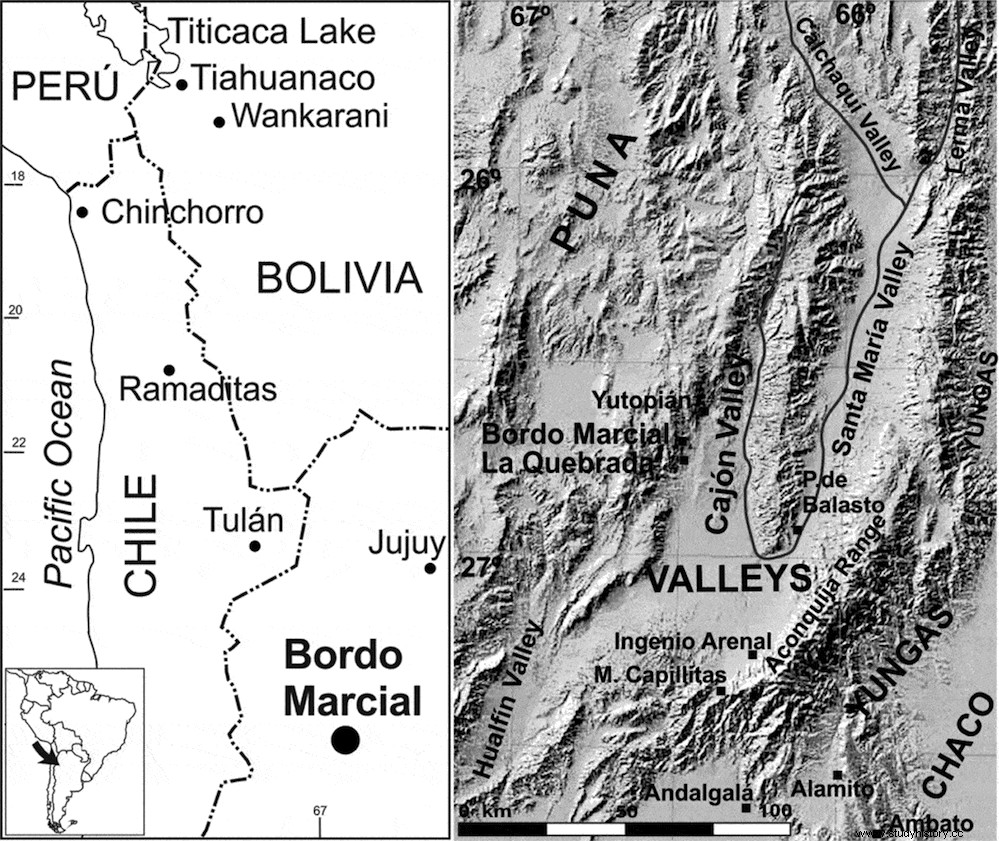About 3,000 years ago, those who inhabited the Andean area to the northwest of what is now Argentina created a unique object. An 18 by 15 centimeter copper metal plate that was given the appearance of an anthropomorphic mask of a human face, with eyes, nose and mouth in the form of holes.
It was discovered accidentally in 2005, thanks to a storm unearthing it, in a place where archaeologists also found the remains of 14 people, in the Bordo Marcial area, near the town of La Quebrada. The bones of the individuals were mixed in a pile, on top of which was the unique mask.
Since then it remained one of many metallic objects discovered on the continent, until the find was published in 2010 by the Bulletin of the Chilean Museum of Pre-Columbian Art.

In July 2017, a new study published in the journal Antiquity He considered it the first metallic object created by man in all of South America. It is true that there are older pieces, but none have the characteristics of this one.
According to the study's authors, none of these artifacts have been intentionally modeled as a recognizable shape, nor were they drilled or modeled as three-dimensional objects . In other words, it would be the first metal piece intentionally worked.
Moreover, the find, which dates to around 1000 BC, casts doubt on the idea, generally accepted until now, that metallurgy on the subcontinent had originated in Peru. According to the researchers, it is highly probable that it emerged in Argentina at the same time.

The piece is made of copper, with impurities that barely reach 1 percent. To create it, according to the researchers, someone had to cold-hammer the metal, then reheated it.
This would be proof that smelting and annealing (thermal treatment to soften the metal and at the same time make it stronger) would have their earliest production centers in northwestern Argentina and northern Chile.

It has nine small circular perforations near the edges, in groups of two on each side and in the upper corners. These perforations suggest that the mask may have been attached by ropes to a larger object made of materials that have not survived.
It is fractured and covered by a layer of corrosion, which the researchers have decided not to remove to avoid further damage to the object.
In addition, in another adjoining tomb, which contained the remains of a child between 8 and 12 years old, a perforated metal earring, also made of copper and contemporary to the mask, was found.
